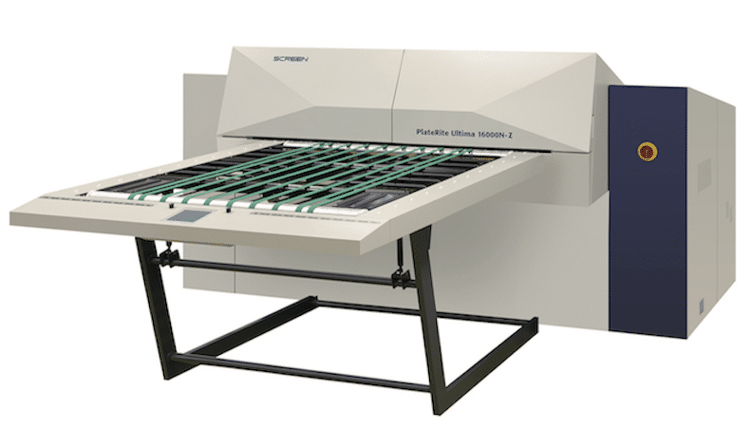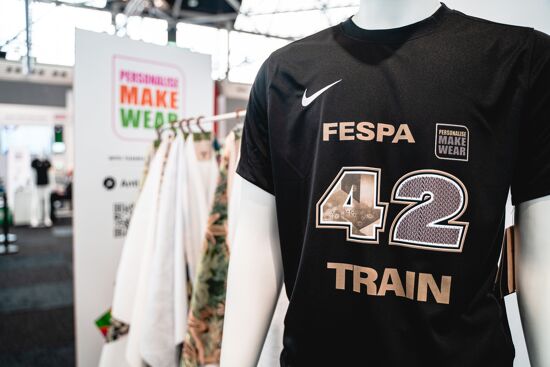Screen announces new PlateRite Ultima 16000N series

Screen has replaced its 16-up VLF thermal platesetters with a new range which is said to deliver improved productivity and energy efficiency.
As consumer preferences have continued to diversify in recent years, the printing industry has sought to introduce increasingly advanced large size presses that can provide greater efficiency in handling small lot, short turnaround work.
This trend has also expanded worldwide shipments of larger models within Screen GA’s PlateRite series of thermal CTP systems.
Seeking to more closely target industry needs, Screen GA has now developed its PlateRite Ultima 16000N series of thermal plate recorders. These systems are capable of handling plates with up to 16 A4 pages while delivering greatly improved productivity, operability and energy efficiency. Three models, the Z, S and E, are available to meet specific requirements.
All systems are equipped with the latest GLV imaging heads, creating major improvements in the optical system. The heads produce significantly more uniform light distribution while a high-precision auto-focus mechanism allows the output of Screen’s proprietary Spekta 2 hybrid screening and Randot X 20 (20 µm) FM screening.
The Z model features a 1,024 channel head that is able to produce 42 plates per hour. A single system is able to handle plates including from 4 to 16 A4 pages. The S and E models use the 512 channel heads, and can produce 29 and 17 plates per hour respectively.
All systems support plate sizes of up to 1,470 x 1,180mm. Installation of the series’ small size option also enables each one to process plates right down to 450 x 370mm
In addition, each of the models supports Screen GA’s MA-L16000N II multi-cassette autoloader system, allowing a total of up to 450 plates to be supplied automatically. The MA-L16000N II dramatically extends the length of continuous operation, helping to boost press operating ratios and productivity while improving ease of use.
Energy use during operation is now reduced by up to 55%, thanks to features such as a power-saving mode that cuts consumption during idling. Energy use during standby is reduced by up to 83%.
“Although CtP is a mature market, as the world’s leading manufacturer, Screen will continue fulfilling its development responsibilities to our CtP customers and dealers. The new PlateRite Ultima 1600N series and support system is a good example of this,” commented Screen GP managing director Peter Scott.
Screen GA is also in the process of finalising arrangements that will make it possible for users to monitor all three models remotely via the company’s TRUST Network Service. This cutting-edge online maintenance support package will ensure the CTP systems remain in optimal condition at all times (planned service).
The 16000N series will be available worldwide from this month.
Topics
Interested in joining our community?
Enquire today about joining your local FESPA Association or FESPA Direct
Recent news

Streamlining personalisation with tech: Insights from the SmartHub Conference 2025 speakers
Personalisation Experience 2025 (6 – 9 May 2025, Messe Berlin, Germany) is running its inaugural SmartHub Conference from 6 – 8 May 2025.

Special Effects in DTF: How Neon Inks Are Making Apparel Pop
Neon fluorescent inks are the latest innovation in DTF printing, offering vibrant, eye-catching effects under both daylight and UV light, giving apparel decorators a competitive edge. Testing shows good wash durability, though market perception of added value is still developing. With increasing adoption and ongoing technological advancements, neon represents a significant upgrade for creative customisation.

Unlocking Growth Opportunities in the Printed Personalised Apparel Industry
The printed personalised apparel industry is booming, projected to reach $10.1 billion by 2030. Driven by consumer desire for self-expression and branding needs, technological advancements like DTG/DTF and e-commerce integration are key. Sustainability, eco-friendly materials, and on-demand printing are crucial growth drivers. Businesses leveraging these trends, including AI and social media, have significant commercial potential.

Personalisation: From mass production to print-on-demand
Technological advancements are driving the growing trend of personalisation, fueled by consumer demand for unique products. From packaging campaigns like Share-a-Coke to customised apparel by Nike and Adidas, and AI-powered tools, the shift from mass production to print-on-demand is evident. The SmartHub Conference at the Personalisation Experience from 6 - 8 May will explore these opportunities and challenges for businesses.